2009
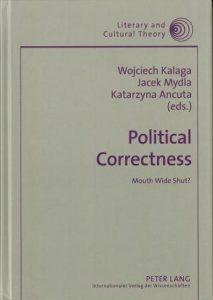 This article focuses mainly on contemporary Asian cinema, in particular the popular cinema of China/HK, Japan and South Korea, admittedly the most dynamjcally developing Asian film centres.1 By Western standards, the films under discussion here would be classified not only as politically incorrect but offensive to absolutely everybody. At the same time, although the films in question are rather extreme examples, they can be seen as representative of quite a significant part of the contemporary HK, Japanese and Korean film industries. For the sake of clarity I have chosen to make China/HK the core of my argument, though many of the conclusions can equally well apply to Japan and South Korea. Since the article treats PC as a Western phenomenon it distinguishes between Asian communities in the West and Asians in Asia.
This article focuses mainly on contemporary Asian cinema, in particular the popular cinema of China/HK, Japan and South Korea, admittedly the most dynamjcally developing Asian film centres.1 By Western standards, the films under discussion here would be classified not only as politically incorrect but offensive to absolutely everybody. At the same time, although the films in question are rather extreme examples, they can be seen as representative of quite a significant part of the contemporary HK, Japanese and Korean film industries. For the sake of clarity I have chosen to make China/HK the core of my argument, though many of the conclusions can equally well apply to Japan and South Korea. Since the article treats PC as a Western phenomenon it distinguishes between Asian communities in the West and Asians in Asia.

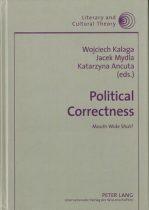
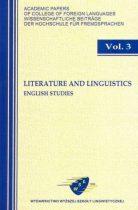
 This article examines the phenomenon of Asian horror1 and its effect on contemporary Western horror film industry. The recent popularity of Asian horror films marked by their continuous presence in mainstream Western cinema chains since the opening of Hideo Nakata’s Ringu in 1999, numerous instant remakes of the most successful Oriental productions by big American studios, the employment of Eastern film directors to re-shape horror and related genres in the West, or simply the ever-growing number of Asian motifs and influences in new horror films are more than enough to prove that the transfusion of new blood is much needed and much welcome at the same time. What makes it particularly interesting, however, is the fact that Asian horror does not actually offer anything new. The most successful and talked-about film productions, such as Nakata’s Ringu (1998) /Ringu 2 (1998), The Pang Brothers’ The Eye (2002), or Nakata’s Dark Water (2002) do not overwhelm the audience with sophisticated special effects and explosive action. As one of the British film critics aptly put it in his review of Nakata’s Ringu 2, ‘never before have we been so scared by two hands on a railing.’ And this is where the secret of Asian horror lies: in going back to the deepest roots of horror, in tackling our hidden fears, in bringing the Uncanny to life and scaring us out of our wits. This article is but a glimpse of how it is done.
This article examines the phenomenon of Asian horror1 and its effect on contemporary Western horror film industry. The recent popularity of Asian horror films marked by their continuous presence in mainstream Western cinema chains since the opening of Hideo Nakata’s Ringu in 1999, numerous instant remakes of the most successful Oriental productions by big American studios, the employment of Eastern film directors to re-shape horror and related genres in the West, or simply the ever-growing number of Asian motifs and influences in new horror films are more than enough to prove that the transfusion of new blood is much needed and much welcome at the same time. What makes it particularly interesting, however, is the fact that Asian horror does not actually offer anything new. The most successful and talked-about film productions, such as Nakata’s Ringu (1998) /Ringu 2 (1998), The Pang Brothers’ The Eye (2002), or Nakata’s Dark Water (2002) do not overwhelm the audience with sophisticated special effects and explosive action. As one of the British film critics aptly put it in his review of Nakata’s Ringu 2, ‘never before have we been so scared by two hands on a railing.’ And this is where the secret of Asian horror lies: in going back to the deepest roots of horror, in tackling our hidden fears, in bringing the Uncanny to life and scaring us out of our wits. This article is but a glimpse of how it is done.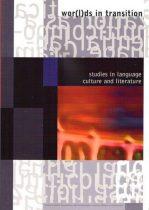
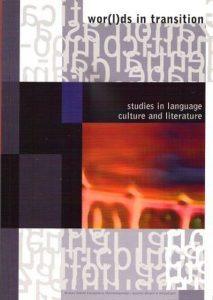 The following paper explores the work of several contemporary visual artists who frequently choose as their medium video installations or video performance. Their works probe into the nature of perception and representation, examining the relation between the visible and the seer, and involving the seer in a variety of visual games. More often than not they are concerned with visual representation as the distortion of reality, or indeed the misrepresentation of the real. The versatility of modern technologies has allowed contemporary artists for recreating many a theoretical speculation, making their artwork an interesting supplement to the numerous theories of perception.
The following paper explores the work of several contemporary visual artists who frequently choose as their medium video installations or video performance. Their works probe into the nature of perception and representation, examining the relation between the visible and the seer, and involving the seer in a variety of visual games. More often than not they are concerned with visual representation as the distortion of reality, or indeed the misrepresentation of the real. The versatility of modern technologies has allowed contemporary artists for recreating many a theoretical speculation, making their artwork an interesting supplement to the numerous theories of perception.
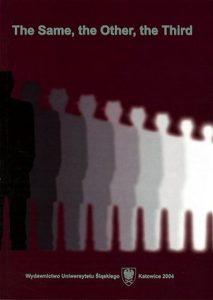 Freud uses the example of the fantasy to formulate the view that masochism originates from sadism which has been turned round upon the self. But while the stipulations of sado-masochism are of vital importance for the Gothic genre in general, it is exactly the figure of the spectator in the sado-masochistic context this paper is specifically devoted to. Under the scrutinising gaze of the Gothic Spectator the re-enactment of his/her own tragedy may both bring voyeuristic enjoyment and add a sharper edge to the Spectator’s own masochism through the repetition of trauma. Seen from this perspective the Spectator becomes an inseparable element of the clash between the submissive Same and the dominant Other – the spectator becomes the Third.
Freud uses the example of the fantasy to formulate the view that masochism originates from sadism which has been turned round upon the self. But while the stipulations of sado-masochism are of vital importance for the Gothic genre in general, it is exactly the figure of the spectator in the sado-masochistic context this paper is specifically devoted to. Under the scrutinising gaze of the Gothic Spectator the re-enactment of his/her own tragedy may both bring voyeuristic enjoyment and add a sharper edge to the Spectator’s own masochism through the repetition of trauma. Seen from this perspective the Spectator becomes an inseparable element of the clash between the submissive Same and the dominant Other – the spectator becomes the Third.
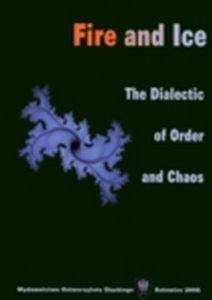 This article focuses on contemporary Japanese horror cinema seen as a case in point representing the influence of (South) East Asian horror on contemporary horror genre. While it might be argued that the success of Japanese horror films on European and American markets can be at least partially attributed to Western viewers’ ignorance of Japanese customs and traditions, which forces the films to remain trapped within the realm of the cultural Other and as such renders them more mysterious and uncanny, this factor of course does not apply to the Japanese audience. And yet we have reasons to presume that they also find the films in question unnerving. So what scares the Japanese then? And to what extent can the fear induced by Japanese horror films be seen as culturally-bound? Drawing on the analysis of a number of contemporary Japanese horror productions this article suggests that behind practically all the Japanese horror plots lies culturally-fostered fear of Chaos, and indeed, many of the significant Japanese horror figures/images can be brought down to representations of Chaos.
This article focuses on contemporary Japanese horror cinema seen as a case in point representing the influence of (South) East Asian horror on contemporary horror genre. While it might be argued that the success of Japanese horror films on European and American markets can be at least partially attributed to Western viewers’ ignorance of Japanese customs and traditions, which forces the films to remain trapped within the realm of the cultural Other and as such renders them more mysterious and uncanny, this factor of course does not apply to the Japanese audience. And yet we have reasons to presume that they also find the films in question unnerving. So what scares the Japanese then? And to what extent can the fear induced by Japanese horror films be seen as culturally-bound? Drawing on the analysis of a number of contemporary Japanese horror productions this article suggests that behind practically all the Japanese horror plots lies culturally-fostered fear of Chaos, and indeed, many of the significant Japanese horror figures/images can be brought down to representations of Chaos.![[Wo]men in black: Exiles in contemporary Gothic](https://asiangothic.houseoftoyols.com/wp-content/uploads/2024/09/book-covers_004-142x210.jpg)
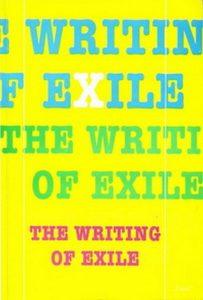 This article takes a closer look at two Contemporary Gothic film productions centred on the figures of relatively well-developed Gothic heroes: The Crow (Alex Proyas, 1994) and The Piano (Jane Campion, 1993). The paper focuses on the image of the exile as the core composition element of modern Gothic tales and draw analogies between exiles in Contemporary Gothic and Julia Kristeva’s notion of the foreigner. Pondering along with Kristeva on whether the exile/foreigner can be happy I shall point out a few inconsistencies in modelling Contemporary Gothic heroes, which seem to have become a characteristic feature of the films made in the 1990s. Finally, the article mentions the impact Gothic (happy or unhappy) exiles have had on popular culture and the subcultures based on the enjoyment of depression.
This article takes a closer look at two Contemporary Gothic film productions centred on the figures of relatively well-developed Gothic heroes: The Crow (Alex Proyas, 1994) and The Piano (Jane Campion, 1993). The paper focuses on the image of the exile as the core composition element of modern Gothic tales and draw analogies between exiles in Contemporary Gothic and Julia Kristeva’s notion of the foreigner. Pondering along with Kristeva on whether the exile/foreigner can be happy I shall point out a few inconsistencies in modelling Contemporary Gothic heroes, which seem to have become a characteristic feature of the films made in the 1990s. Finally, the article mentions the impact Gothic (happy or unhappy) exiles have had on popular culture and the subcultures based on the enjoyment of depression.
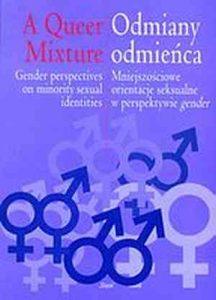 Gothic has always been about paradoxes. It has transgressed boundaries and laughed in the face of tragedy, it has thrilled and inspired, and more than often it has confused us. Today this has not changed; on the contrary, with the growing tendency to question the dichotomy of things the Gothic ambiguity has become an attractive means of expression, especially when we begin to see it as a conscious choice rather than simply an inability to make up one’s mind. The following paper addresses the notion of sexual revolution at the turn of the millennium. It explores the concepts of “the third sex,” bisexuality and “switch” sado-masochism suggested as the possible answer to the conflicts on the grounds of sexuality. I want to argue that the movement towards the elimination of sexual differences does not necessarily have to be viewed in terms of a utopia. On the example of the Goth subculture, seen as one of the groups already living out the ideals of the on-going sexual revolution, I want to posit that the “thirdness” of groups like Goths may help eradicate sex-related phobias and promote recognition of the diversity of human sexuality.
Gothic has always been about paradoxes. It has transgressed boundaries and laughed in the face of tragedy, it has thrilled and inspired, and more than often it has confused us. Today this has not changed; on the contrary, with the growing tendency to question the dichotomy of things the Gothic ambiguity has become an attractive means of expression, especially when we begin to see it as a conscious choice rather than simply an inability to make up one’s mind. The following paper addresses the notion of sexual revolution at the turn of the millennium. It explores the concepts of “the third sex,” bisexuality and “switch” sado-masochism suggested as the possible answer to the conflicts on the grounds of sexuality. I want to argue that the movement towards the elimination of sexual differences does not necessarily have to be viewed in terms of a utopia. On the example of the Goth subculture, seen as one of the groups already living out the ideals of the on-going sexual revolution, I want to posit that the “thirdness” of groups like Goths may help eradicate sex-related phobias and promote recognition of the diversity of human sexuality.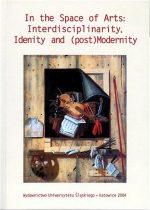
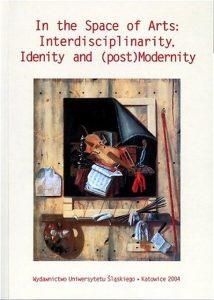 Modern vampires cannot exist without music. I would even go as far as to suggest that certain type of music functions as symbolic representation of the vampire mythos, even though, when analysed on its own, the music in question is not meant to be considered illustrative or symbolic as such. This article offers an insight into the late 20th century vampire-themed music found in film soundtracks, theatrical scores or chart songs. Though representing a variety of musical styles and forms, this musical illustration to the never-ending vampire saga can be brought down to a number of recognisable patterns intended to evoke a particular response and, as such, becoming clear, easy to decode sound messages. These simple sound messages become the musical mark of the vampire resistant to the evolution of music and development of new trends and fashions. Armed with music, the vampire is no longer voiceless.
Modern vampires cannot exist without music. I would even go as far as to suggest that certain type of music functions as symbolic representation of the vampire mythos, even though, when analysed on its own, the music in question is not meant to be considered illustrative or symbolic as such. This article offers an insight into the late 20th century vampire-themed music found in film soundtracks, theatrical scores or chart songs. Though representing a variety of musical styles and forms, this musical illustration to the never-ending vampire saga can be brought down to a number of recognisable patterns intended to evoke a particular response and, as such, becoming clear, easy to decode sound messages. These simple sound messages become the musical mark of the vampire resistant to the evolution of music and development of new trends and fashions. Armed with music, the vampire is no longer voiceless.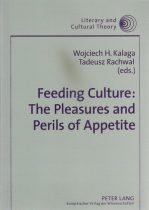
 In my years of interest in Horror I have grown to perceive it in terms of a MEATaphor, that is, a metaphor of meat. For if you take a closer look at contemporary Horror you cannot but notice the fascination of its authors with such themes as the body, flesh, carnality, physicality, monstrosity, mutation, bio-technology and others, all of which can in fact be brought down to the representation of meat. In this paper I would like to present three different approaches to understanding Horror through meat. I would like to discuss the images of meat as food (the “anthropology” of Horror), the images of meat as flesh (the “biology” of Horror), and finally, the images of meat as the negative perception of the female body (the “psychology” of Horror).
In my years of interest in Horror I have grown to perceive it in terms of a MEATaphor, that is, a metaphor of meat. For if you take a closer look at contemporary Horror you cannot but notice the fascination of its authors with such themes as the body, flesh, carnality, physicality, monstrosity, mutation, bio-technology and others, all of which can in fact be brought down to the representation of meat. In this paper I would like to present three different approaches to understanding Horror through meat. I would like to discuss the images of meat as food (the “anthropology” of Horror), the images of meat as flesh (the “biology” of Horror), and finally, the images of meat as the negative perception of the female body (the “psychology” of Horror).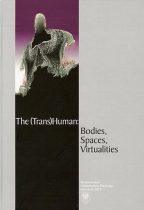
 This paper takes a look at a number of the more controversial contemporary artists and the body-related images and techniques they employ. The artists in question represent quite diverse areas of art, and although they all have been critically recognised and have enjoyed the popularity with the audience and the art critics alike, their works have been known to cause uproar on a par with admiration. The selection of artists includes the notorious YBAs – Jake and Dinos Chapman, the American photographer – Cindy Sherman, the French Carnal Artist – Orlan, the Italian Body Artist – Franko B, the American sado-masochistic performance/multimedia artists – Ron Athey and Bob Flanagan, the Australian artist – Stelarc, and the German anatomist and plastination expert – Gunther von Hagens. To complete the picture, the article will discuss the work of a few less known artists and people for whom body art has become a way of life.
This paper takes a look at a number of the more controversial contemporary artists and the body-related images and techniques they employ. The artists in question represent quite diverse areas of art, and although they all have been critically recognised and have enjoyed the popularity with the audience and the art critics alike, their works have been known to cause uproar on a par with admiration. The selection of artists includes the notorious YBAs – Jake and Dinos Chapman, the American photographer – Cindy Sherman, the French Carnal Artist – Orlan, the Italian Body Artist – Franko B, the American sado-masochistic performance/multimedia artists – Ron Athey and Bob Flanagan, the Australian artist – Stelarc, and the German anatomist and plastination expert – Gunther von Hagens. To complete the picture, the article will discuss the work of a few less known artists and people for whom body art has become a way of life.